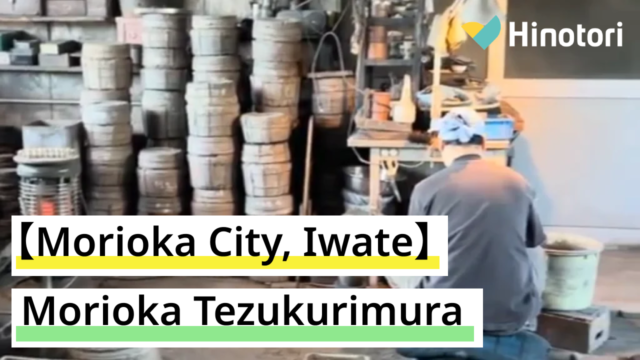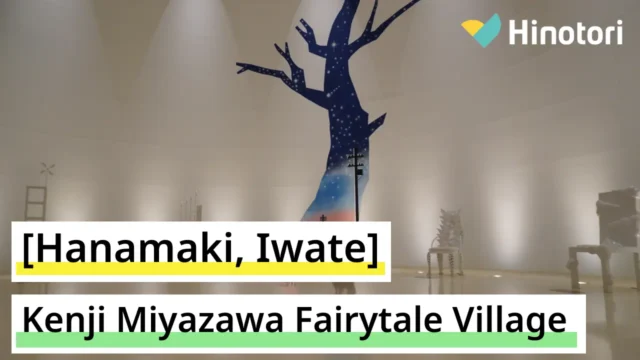ting places to visit. Though conveniently close to Tokyo, this land breathes a relaxed pace of life distinct from the hustle and bustle and efficiency of the capital.
While many travelers seek the appeal of tourist destinations themselves, in Fukushima and Aizu, it is the moments spent experiencing the warmth of the people and the land that become the most memorable experiences. This region offers time enveloped in “Magokoro”: genuine kindness—a feeling you won’t find simply by visiting famous sites.
I myself am from Kansai, south-western half of Japan, and my first visit to Fukushima and Tohoku was just six months ago.
When I first stepped off the train, I was enveloped in an air that felt both nostalgic and fresh, as if I had encountered a Japan I didn’t know.
In this article, I will introduce a model itinerary for a “2-night, 3-day trip to enjoy Aizu” that I personally toured and found deeply moving.
Day 1 begins with a local journey where you can feel the atmosphere of the region and the warmth of its people with your whole body.
Author Profile
Ken of the World (Kensuke Matsuyama)ー
Inspired by his experience moving to Poland, he launched the SNS account 「Ken / Solo Japanese Style」sharing content that bridges Poland and Japan. He now creates videos focused on Japanese culture and daily life, amassing over 1 million total followers. Additionally, he runs「Japan of Japan」 (over 60,000 YouTube subscribers), introducing traditional inns and hidden gems across Japan. He shares the “authentic beauty of Japan” beyond urban areas with a Japanese perspective to the world.
Day 1|A journey beginning with local scenery and “Magokoro”- genuine hospitality
The journey begins at Koriyama Station. From Tokyo, it’s about an hour and a half by Shinkansen—you’ll likely find it surprisingly close. From here, transfer to a train or express bus bound for Aizu-Wakamatsu. The trip takes about an hour, gradually shifting the pace of your journey from city to countryside.
Take the Oza Tora Train to Minamiaizu
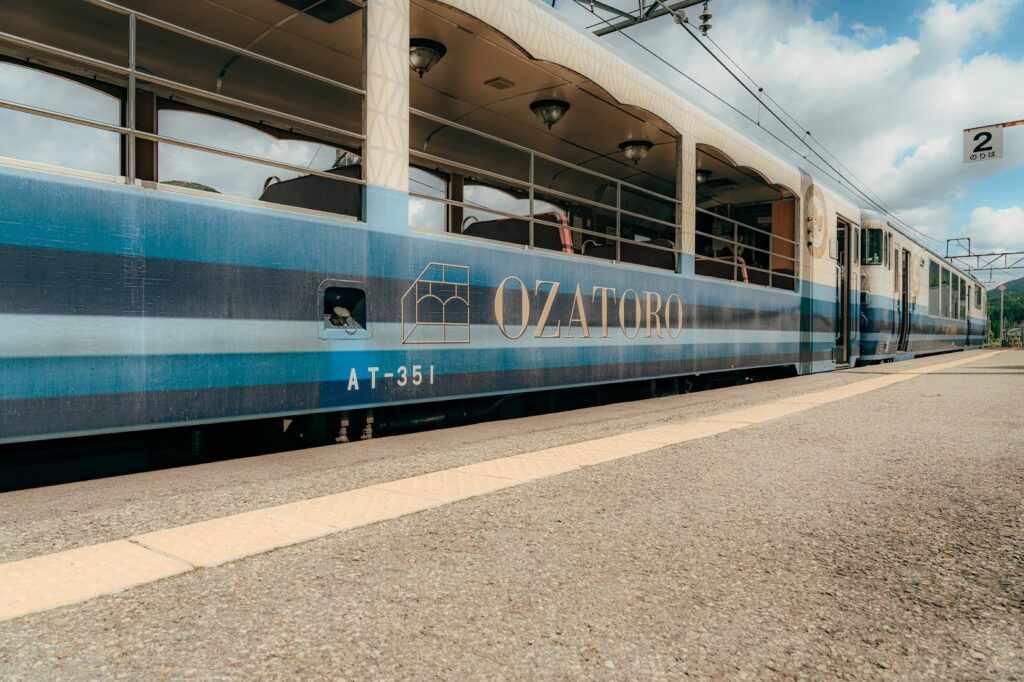
Upon arriving in Aizu-Wakamatsu, hop aboard the “Ozatoro Train” and head toward Minami-Aizu.
This special train combines the concepts of an “ozashiki” (formal tatami room) and a “trolley,” allowing you to take off your shoes and enjoy Japanese sweets and sake in a tatami-floored car, or experience the thrill of riding through valleys in an open-air trolley car, feeling the wind on your skin.
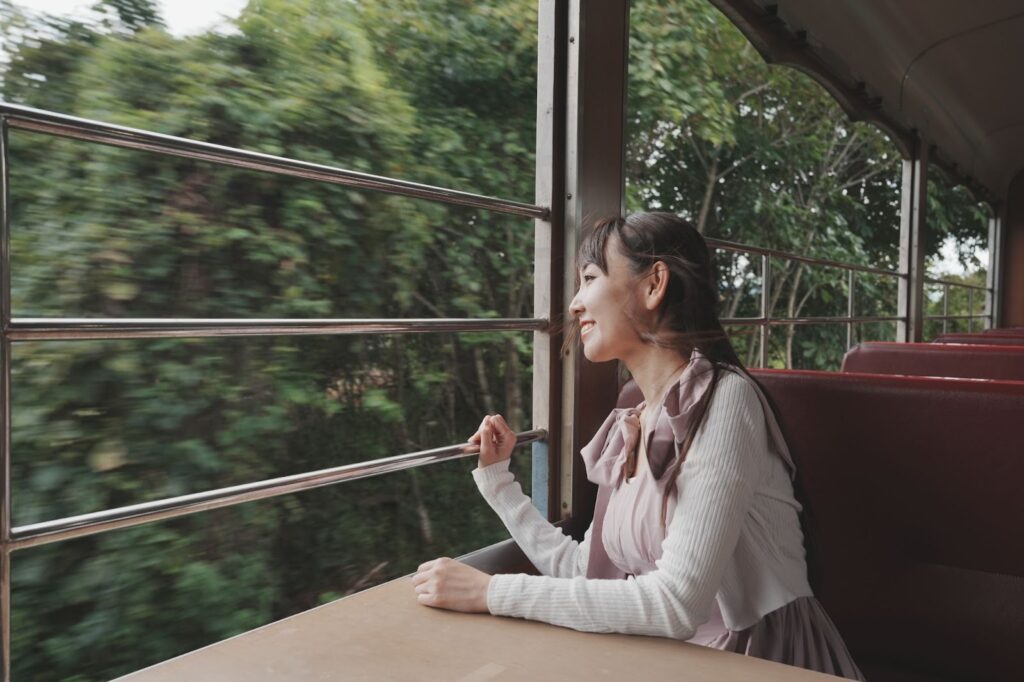
At scenic spots along the way, the train makes brief stops, allowing passengers to leisurely enjoy the views of the clear streams and mountains stretching out below.
The time spent swaying aboard this train is so memorable that, even while traveling, it feels like the journey itself is the destination.
Operations run primarily on Saturdays, Sundays, and holidays from April to November, with open-air windows available only from June to September.
Additionally, only two departures are available daily from Aizu-Wakamatsu (9:50 AM and 1:34 PM), so be sure to check the schedule in advance to plan your timing.
Due to the limited number of trains and operating days, advance confirmation is essential. For a detailed ride report, please refer to this article.
▷Learn more about the Oza-Toro Scenic Train

The Edo-period post town of Ōuchi-juku

Upon arriving at Yunokami Onsen Station along the way, take the Saruyū bus—which requires advance reservations—to Ōuchi-juku.
Though the journey takes only about 15 minutes, as you pass through the mountain valley, the clamor of the city fades completely, creating a sensation of crossing into another era.
Ōuchi-juku is a nationally designated Important Preservation District for Groups of Traditional Buildings, preserving the appearance of an Edo-period post town. The thatched-roof houses lining the highway in neat rows create a scene like stepping into a scroll painting. Crowds typical of tourist spots are relatively sparse here; simply walking the streets calms the mind.
The gentle smiles of locals occasionally passing by further enrich the atmosphere of this place.
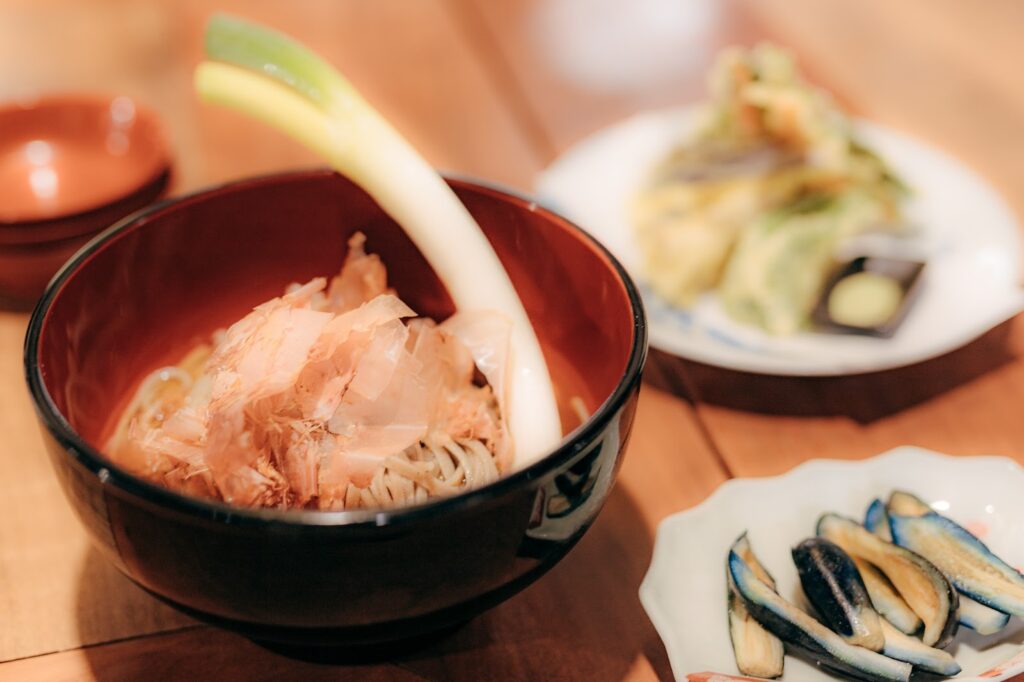
What you’ll want to try here is something called “green onion soba.”
If you’ve only recently learned to use chopsticks, that’s a real shame,because here, instead of chopsticks, you eat the soba using a single long green onion.
It’s a unique way of eating, where you consume the soba along with the condiments, and first-timers will likely struggle.

You can also find the familiar Japanese soda “Ramune” sold everywhere.
The distinctive clinking of the marble and the refreshingly sweet fizz seem to suddenly bring back nostalgic memories.
The townscape changes dramatically with the seasons, and the fresh green of spring, the autumn foliage, and the winter snow scenes are all breathtakingly beautiful.
▷Learn more about the Ouchi-juku
A Memorable Stay Surrounded by “Magokoro”
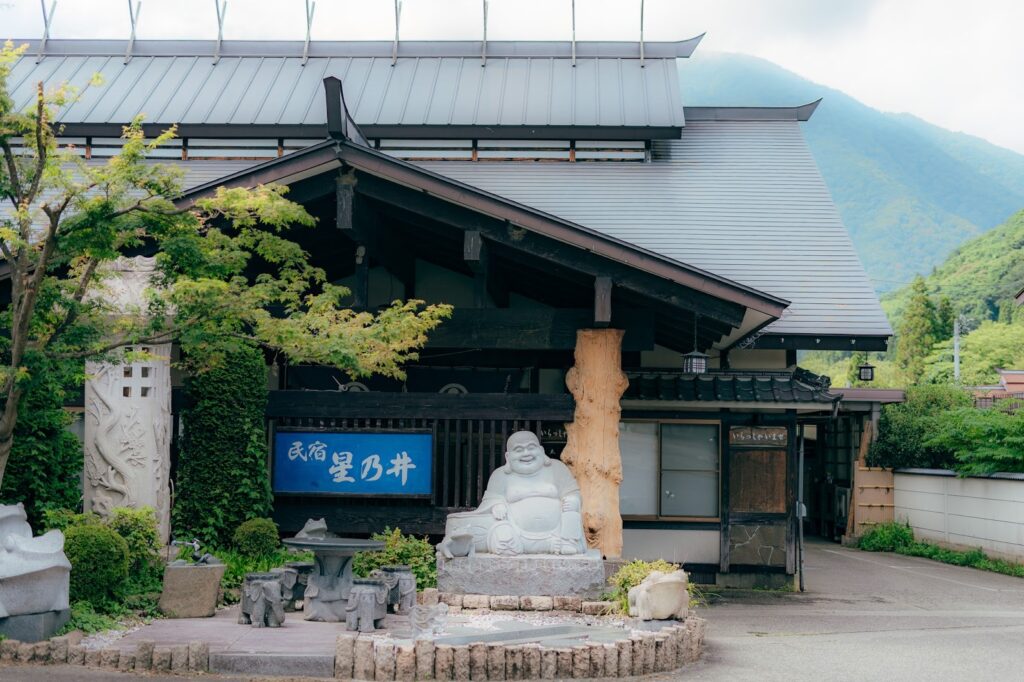
After finishing sightseeing, we took the bus back to Yunokami Onsen Station and headed to our lodging for the night, “Magokoro no Yado Hoshinoi.”
‘Magokoro’ is a Japanese word that literally translates to “true heart” or “sincere heart.” It refers to a uniquely Japanese concept: acting with genuine kindness and sincerity without expecting anything in return.
It’s not about grand gestures, but rather something that naturally seeps through in casual words and thoughtful attentiveness.
Such is the charm of “Magokoro no Yado Hoshinoi.”
Though it’s about a 15-minute walk from the station, the inn offers a shuttle service, so you can relax even if you have heavy luggage or are feeling tired.
This long-established inn utilizes a building that was once a sake brewery and has been cherished by travelers for many years. Stepping through the entrance, you’re greeted by the staff’s smiles and a calm atmosphere, making even first-time visitors feel their shoulders relax naturally. The fact that about 70% of guests are repeat visitors speaks volumes about this inn’s appeal.
Visiting a ryokan for the first time might make you feel anxious about rules and etiquette.
But don’t worry. As long as you respect Japanese culture and act accordingly, everyone will kindly support you.
We’ve also posted a video about ryokan etiquette, so be sure to check that out too.
▷The inn of sincerity -Hoshinoi- movie
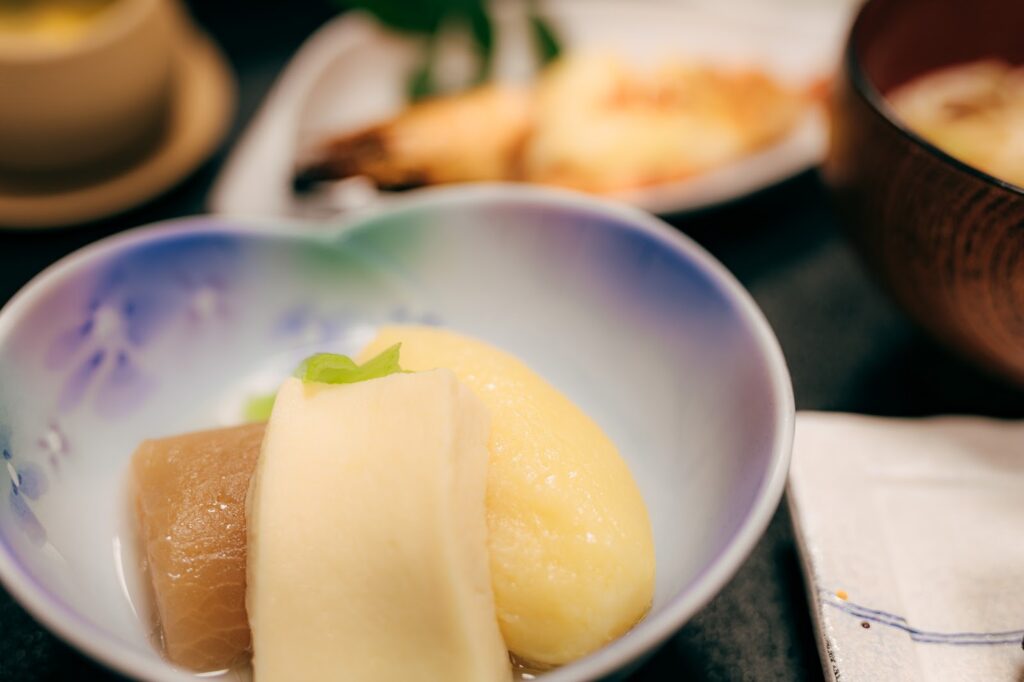
Among them, Hoshinoi’s meals are exceptional.
The menu features local cuisine made with seasonal ingredients from the region. Particularly renowned is the signature dish “simmered potatoes,” a signature dish passed down for over 50 years. Its flavor is wonderfully fresh yet nostalgic.
This simple yet profound taste is a masterpiece that often surprises first-time diners, who exclaim, “I’ve never tasted potatoes like this before.”

The open-air bath, fed by the source of Yunokami Hot Springs, is available for bathing 24 hours a day.
At night, stars reflect on the water’s surface, with only the sound of insects echoing. The time spent soaking in the bath while gazing up at the night sky is filled with a tranquility that simply doesn’t exist in the city at night.
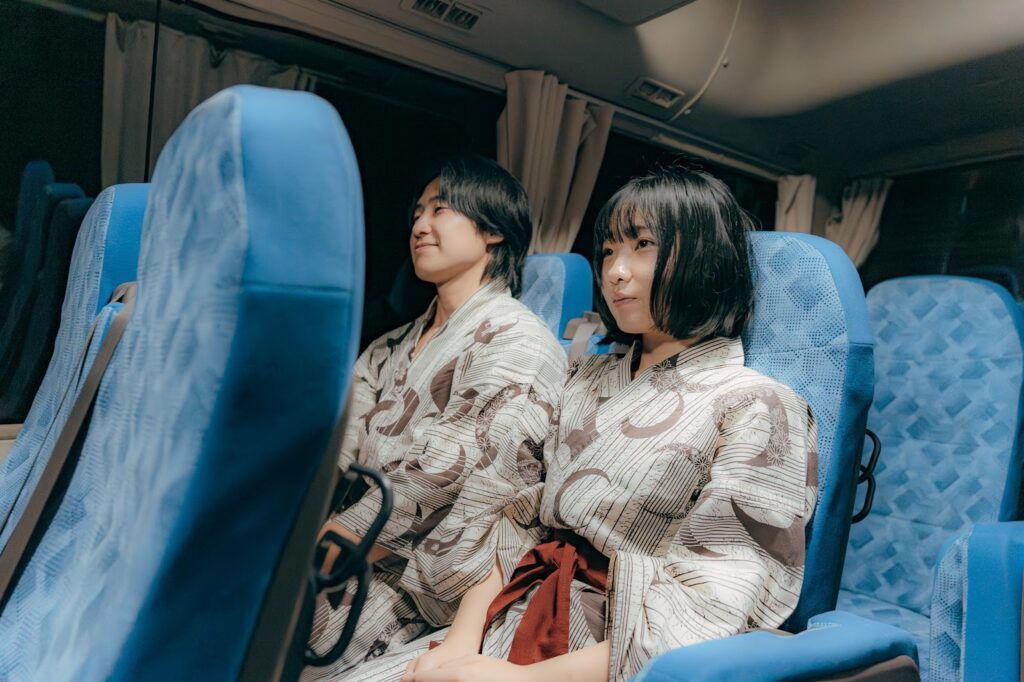
The night at Hoshinoi is far from over. The real treat is the night tour, exclusive to guests staying overnight. The owner himself drives the minibus, guiding you through Ōuchi-juku by night—a special experience unique to Hoshinoi, unavailable at any other inn.
During the day, Ōuchi-juku bustles with tourists, but come nightfall, all traces of people vanish. Only the murmur of water and a sky full of stars remain, enveloping the place in a quietness like another world. Visiting during the day makes this contrast feel even more vivid, allowing you to savor a luxurious time as if you had the entire village all to yourself.
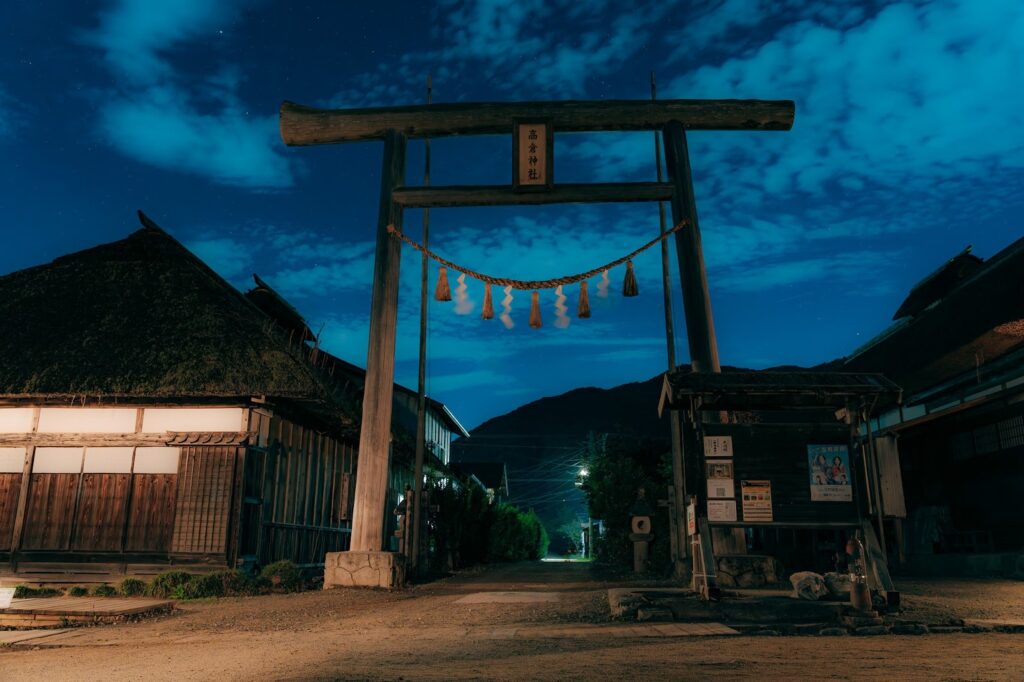
This tour began with a simple desire to share the beauty of fireflies, and through word of mouth, it has grown to become one of the inn’s defining features. Once you experience this heartfelt hospitality, you’ll discover the true essence of Japan.

As described above, the first day is less about rushing from one famous spot to the next and more about immersing oneself in the local atmosphere and the warmth of its people. Travel, scenery, and lodging flow seamlessly together, quietly laying the foundation for the journey. From here, the story of Aizu truly begins.
▷View more details about The inn of sincerity -Hoshinoi-
Day 2|The Classic Route Through Aizu-Wakamatsu’s History and Culture
Day one was spent immersed in the local atmosphere and the warmth of its people.
The next day, we’ll change the pace a bit and set out on a journey to explore the “must-see spots” of Aizu-Wakamatsu.
This area’s appeal lies in its excellent accessibility and abundance of tourist attractions.
By skillfully combining different modes of transportation, you can fully savor Aizu’s history and culture even in just one day.
Morning Tour and Train Journey
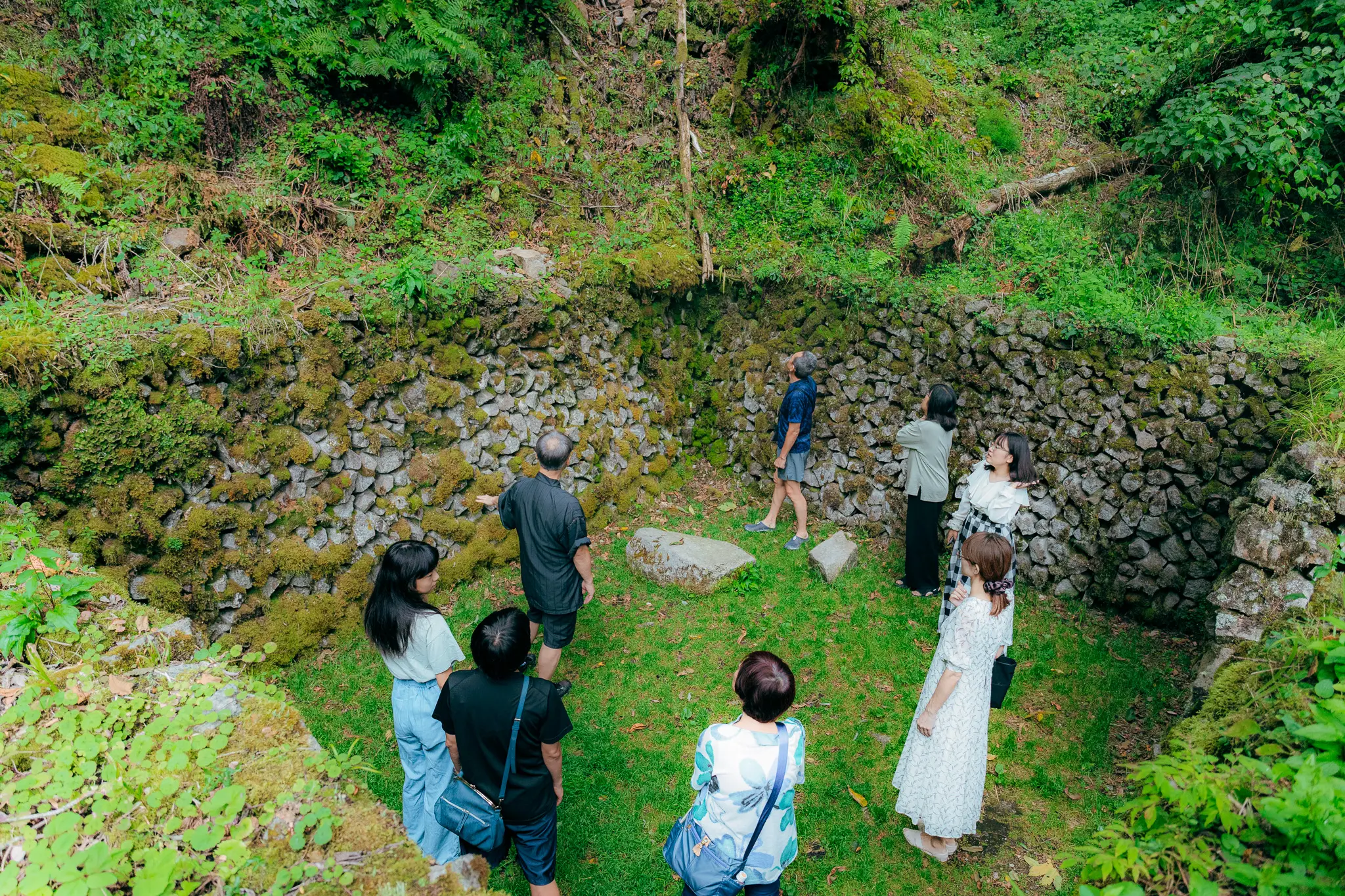
Mornings begin with the signature Morning Tour at Hoshinoi Inn.
The owner drives you to a “little secret spot” nestled in the nearby mountains.
Though it looks like an ordinary grassy field at first glance, the moment you step inside… you’re struck by a strange sensation. It’s a place where nature weaves a bit of magic, a special experience that instantly switches you into travel mode from the very start of the day. You really have to see it for yourself.

After finishing the tour, we returned to Yunokami Onsen Station.
The thatched-roof station building, bathed in the soft morning light, exuded a certain dignified atmosphere. After taking a breather at the footbath beside the station, we boarded the train bound for Aizu-Wakamatsu.
Though it’s the same line as the “Ozatoro Train” I rode the day before, the view from the opposite direction reveals a different character. On the way there, I gazed at the mountains of Minami-Aizu as a “journey about to begin.” On the return trip, you should feel the “unfolding of the story” as you gradually approach the castle town. Even on this short stretch, the lingering echoes of the journey and the anticipation naturally build.
▷Learn more about the Yunokami-Onsen Station
Retro Towns and Local Cuisine

Get off the train at Nanokamachi Station, one stop before Aizu-Wakamatsu Station.Exiting the station, the retro shopping street Nanokamachi-dori stretches straight ahead.
This street, which flourished as the western gateway to the castle town since the feudal era, retains a strong aura of the Taisho and Showa periods. The orderly rows of white-walled storehouses and wooden buildings feel like stepping back in time to Japan a century ago. Simply strolling down the street allows a sense of timeless travel to naturally seep into your heart.

Nanokamachi Street offers the joy of eating on the go and local gourmet cuisine, further enhancing your travel experience. When it comes to Aizu specialties, first and foremost is “Kitakata Ramen.”
Its signature features are a clear soy sauce-based broth and thick, curly, chewy noodles, delivering a gentle flavor where the umami of pork bones and seafood softly unfolds. Unlike typical rich, heavy ramen, it’s cherished locally as a nostalgic, never-boring “gentle bowl.”
We recommend “Kirin,” located right next to the next spot, Tsurugajo Castle. It preserves the traditional flavor while offering an inviting atmosphere that welcomes tourists.
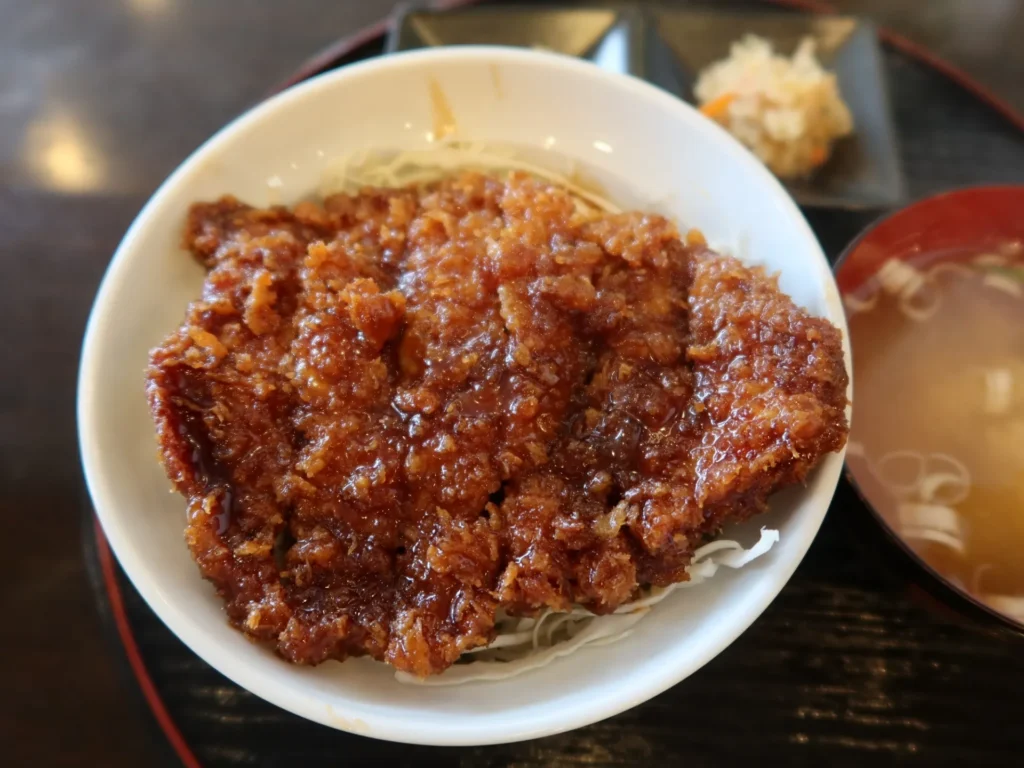
Another local specialty is the “sauce katsu-don.”
This dish features freshly fried pork cutlet dipped in a sweet and savory special sauce, generously piled atop rice. The crispy, fragrant coating combines with the meat’s savory flavor and the sauce’s deep richness, making it impossible to stop eating. Rather than tourist spots, we recommend enjoying the authentic taste at local eateries and cafeterias frequented by locals.
Nakajima is known as a popular spot beloved by locals. Here you can savor an authentic bowl of ramen, simple yet meticulously crafted with a focus on ingredients and flavor.
Along the street, you’ll also find spots dotted with shops offering little treats: miso dengaku enjoyed around a traditional hearth in a store converted from a miso warehouse dating back to the late Edo period, old-fashioned Japanese sweets like o-hanayaki, and soft serve ice cream. The savory aroma of miso and the combination of piping hot o-hanayaki with cold ice cream slowly soothe your tired body.
(喜多方ラーメン&ソースカツ丼の写真)
To Aizu-Wakamatsu’s symbol, Tsurugajo Castle
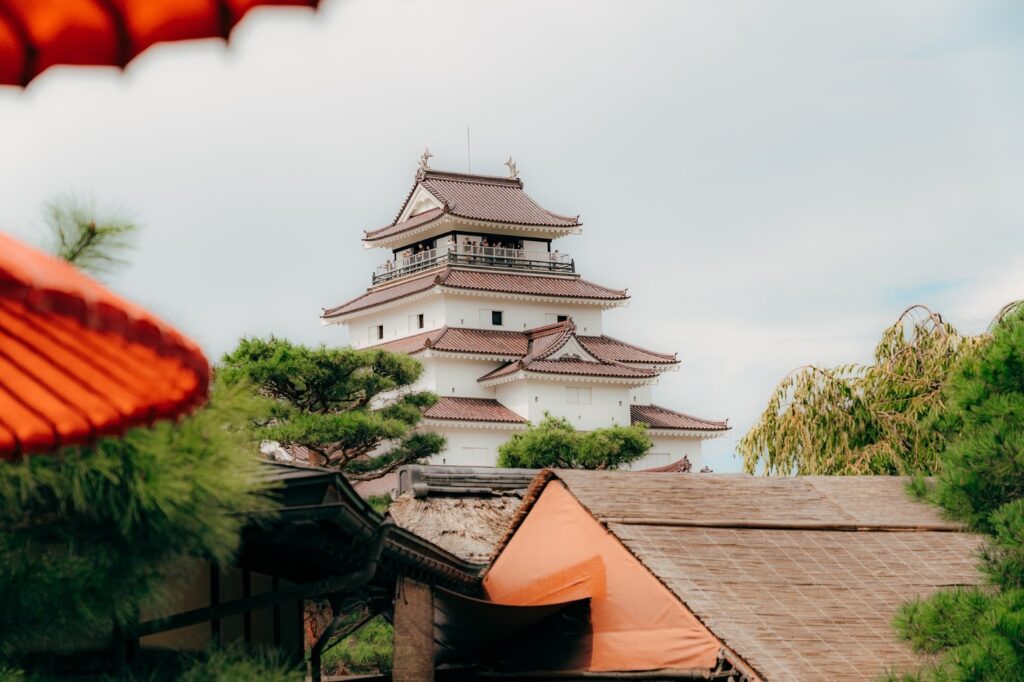
After enjoying Nanokamachi Street, next take a short drive to Tsuruga Castle (Aizu-Wakamatsu Castle). After lunch, renting a car from a nearby rental agency is your best bet.
Several rental companies operate around Aizu-Wakamatsu Station, and among them, “Orix Rent-A-Car Aizu-Wakamatsu” has an English-language official website, making it particularly convenient for international travelers.
Having a rental car will greatly increase your freedom for sightseeing later and will also be useful for getting to that “special spot” the next morning.
Tsurugajo Castle is a renowned castle that can be called the symbol of Aizu-Wakamatsu. Its appearance changes with the seasons, offering picturesque scenery no matter when you visit: cherry blossoms in spring, fresh greenery in summer, autumn leaves in fall, and a snow-covered landscape in winter. Its pure white appearance in winter is particularly renowned as one of Japan’s most beautiful sights.
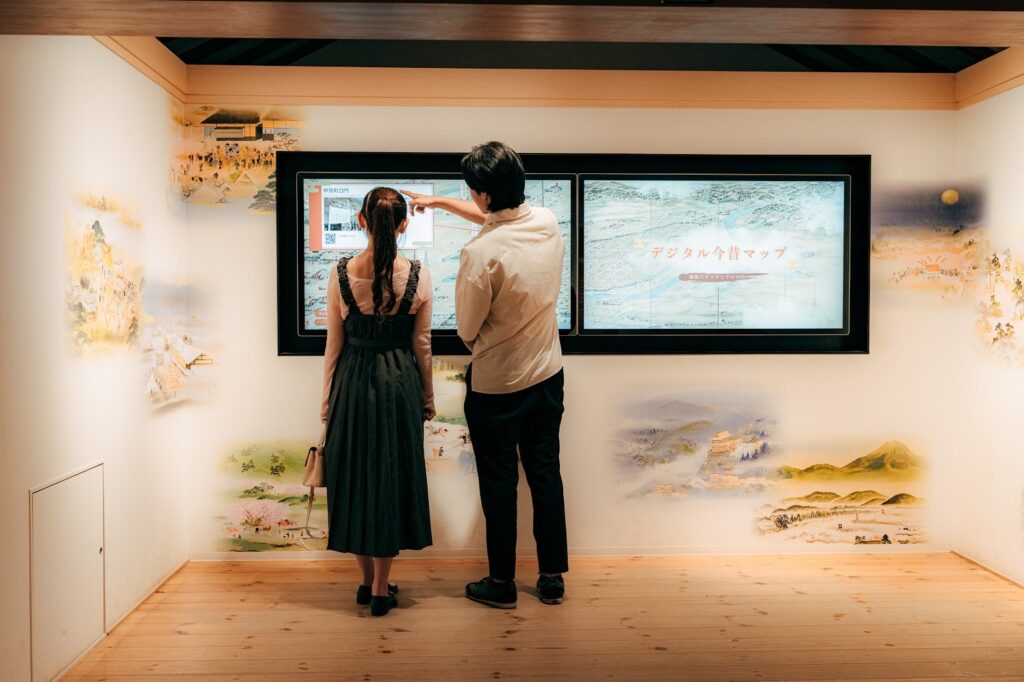
Within the castle walls, visitors can deeply experience the history of Aizu from the Warring States period through the end of the Edo era. The exhibits of armor and weapons, materials related to the Boshin War, and the view from the keep offer ample sights to see. The panorama of the Aizu Basin seen from the high ground is a majestic vista that the warlords of old would have gazed upon.
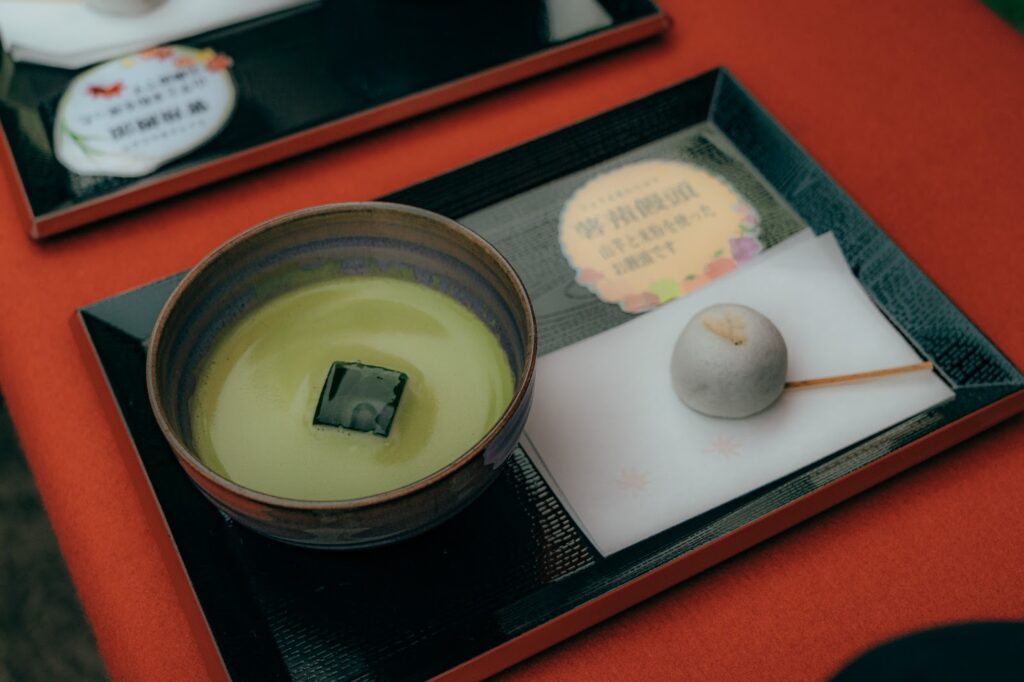
Furthermore, within the grounds stands the tea room “Rinkaku,” built by Kamo Ujisato, a disciple of Sen no Rikyū. Here, visitors can experience a tea ceremony (matcha and Japanese sweets). Overseas, “matcha” almost always refers to sweet matcha lattes.
However, authentic Japanese matcha is characterized by its profound flavor, a complex interplay of bitterness and umami. Sipping it in a quiet tea room offers a glimpse into the world of wabi-sabi cherished by the warlords of the Sengoku period.
▷Learn more about the Tsuruga Castle
Tracing the History of Aizu
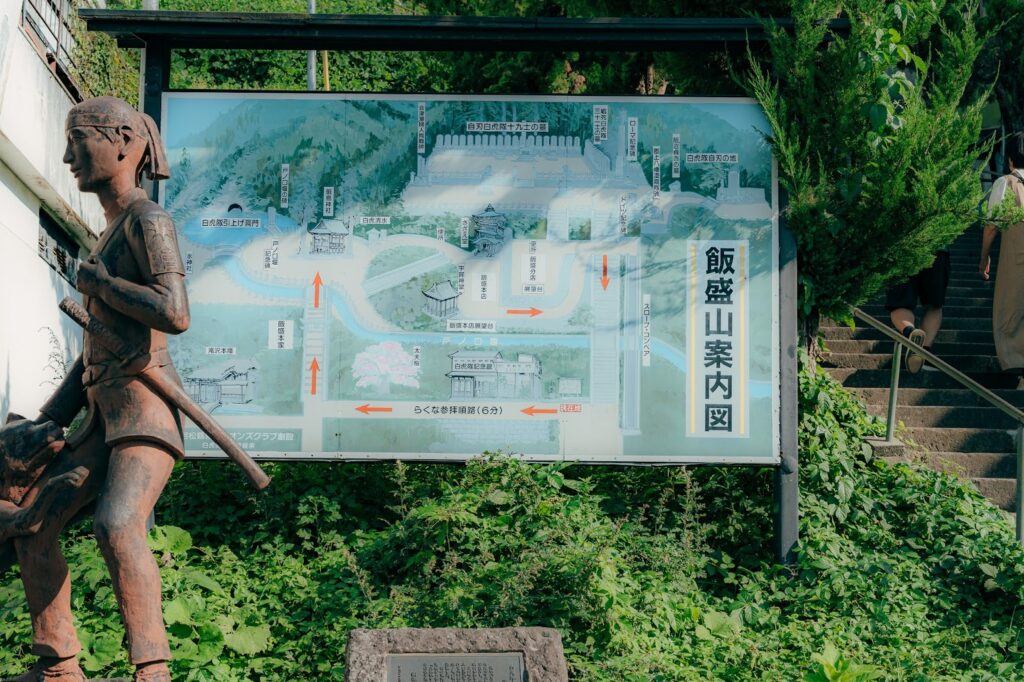
Next, we head to Mount Iimori, about a 10-minute drive from Tsurugajo Castle.
This small hill was one of the battlegrounds of the Boshin War, a major turning point in late 19th-century Japan. The Boshin War was a civil conflict that occurred during the transition of power from the Edo shogunate to the new government (the Meiji government), symbolizing the beginning of modern Japan. The Aizu Domain, fighting on the side of the old shogunate, resisted until the very end, and fierce battles were fought here.
Among them, the most famous are the teenage boys known as Byakkotai. They fought alongside adult samurai. After retreating to Iimoriyama, they saw smoke rising from the distant Tsurugajo Castle and mistakenly believed the castle had fallen. To preserve their samurai honor, they committed seppuku (ritual suicide). On the mountainside, the graves of the nineteen warriors still stand in a row. Many people offer incense and flowers, quietly bowing their heads in prayer.
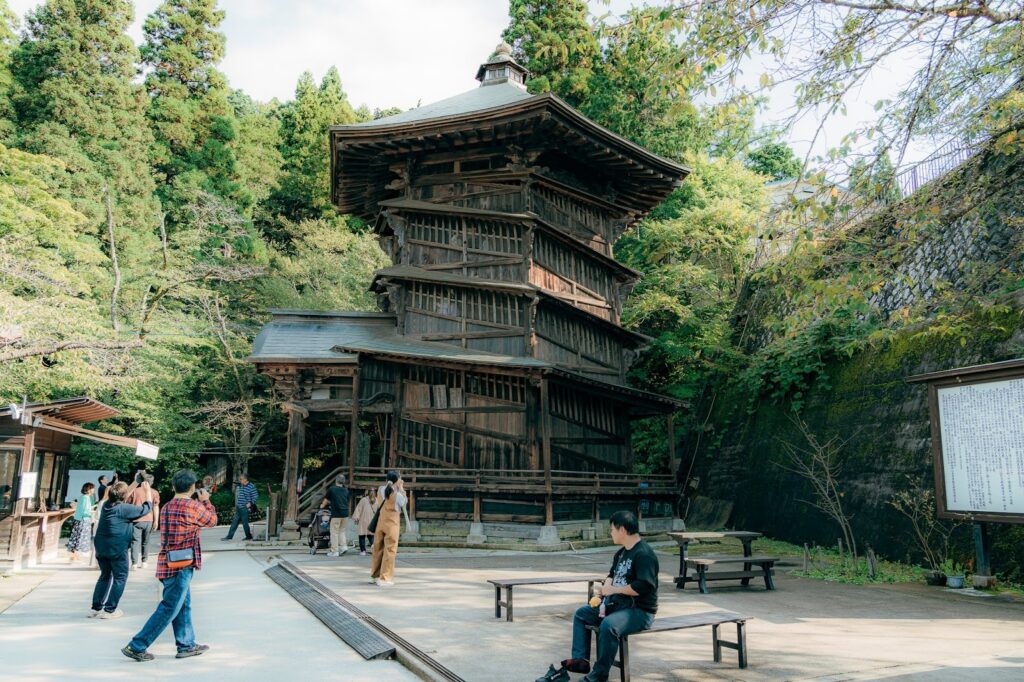
Right nearby is Sazaedo Pavilion.
Built in 1796, this wooden structure features a rare double helix design found nowhere else in the world. Its ascending and descending pathways never intersect, creating a one-way slope. Its design is said to echo concepts explored by Leonardo da Vinci, making it an irresistible attraction for architecture enthusiasts.

Walking inside while listening to the creaking of the wood, you feel as if you’ve slipped back in time to the Edo period. Its exterior is also unique, truly a “mysterious architecture found only in Japan.”
▷Learn more about the Mt. Iimori and Sazae-do Temple
The charming hot spring town of Higashiyama Onsen
After sightseeing, head to Higashiyama Onsen, located on the outskirts of Aizu-Wakamatsu City. Despite being just a 10-minute drive from Tsurugajo Castle, this hot spring town, lined with long-established inns and hot spring lodgings along the river, is enveloped in the quiet charm of a hidden mountain village. Come nightfall, the sound of the river’s murmur echoes, and the soft glow of streetlights illuminates the stone-paved paths, creating a fantastical atmosphere like a scene from a movie.
Among them, I highly recommend “Irorino Yado Ashina.”
The inn retains a strong aura of the Showa era, exuding a nostalgic Japanese atmosphere. The highlight, truly symbolic of the inn, is the dinner served around the irori : a traditional Japanese sunken hearth. Slowly grilled over the hearth’s charcoal fire are seasonal river fish, mountain vegetables, and Aizu local chicken—all gifts from the land. Savoring each dish while enveloped in steam and the aroma of charcoal offers a special moment, irreplaceable by any high-end restaurant.

The hot spring features an abundant flow of natural spring water. Characterized by its slightly warm temperature, it gently melts away the fatigue of travel from deep within. The open-air bath offers views of nature throughout the seasons—spring’s fresh greenery, autumn’s vibrant foliage, and winter’s snowy landscapes—making it charming no matter when you visit.
Above all, what stays with me is the warm hospitality of the proprietress. Her unadorned smile and gentle words radiate the genuine kindness of the people of Aizu.
It truly embodies the essence of a “Japanese inn” where even first-time foreign visitors can relax and feel at ease.
On this day, it’s best to opt for a plan that includes dinner only, as a special experience awaits the next morning. Since you’ll be leaving early in the morning, spend the evening relaxing by the warmth of the hearth and soaking in the hot springs to rest your body thoroughly and prepare for the next day.


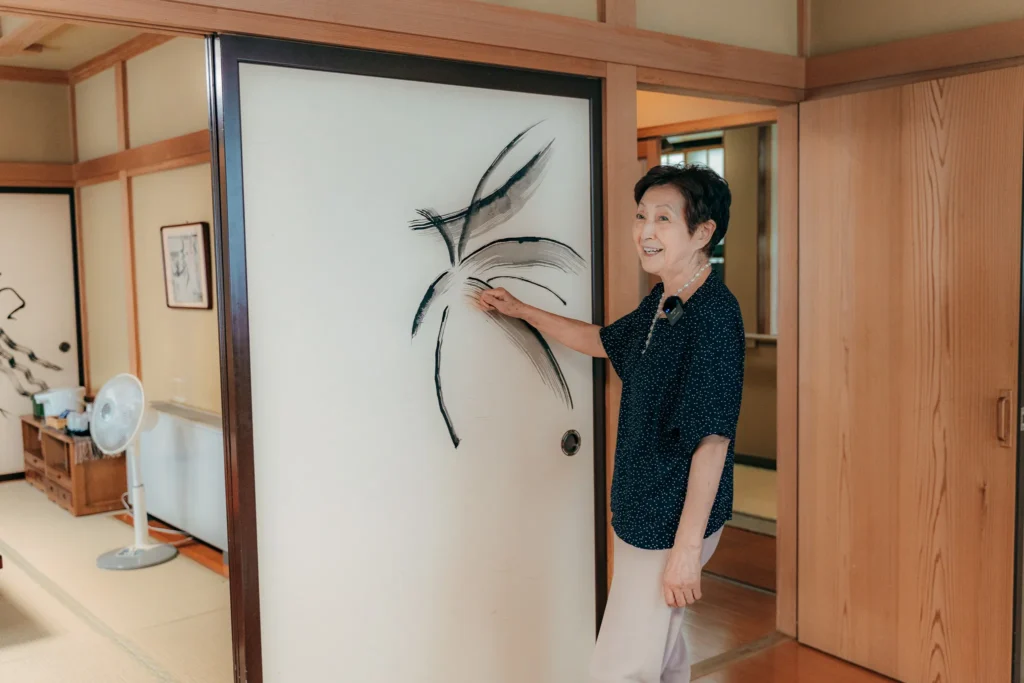
Thus, the second day becomes a journey along the quintessential route, packed with the concentrated essence of Aizu’s history and culture.
In contrast to the “local atmosphere and warmth of the people” experienced on the first day, this day allows you to deeply savor another charm of the Aizu region through tourist spots visited by more travelers. Rail travel, city strolls, history, cuisine, and hot springs—this perfectly balanced day packed with all the elements of travel truly deserves to be called the “classic route.”
▷View more details about The Irori lodge -Ashina-
Day 3|Enveloped in a fantastical morning mist──The final chapter of our journey through Aizu
The final day of the trip began with a special experience early in the morning.
We set off by car from Higashiyama Onsen while night still lingered, heading for Mugen Gorge.
This hidden gem, known only to those in the know, is famous for its fantastical scenery created by the morning mist rising over the Tadami River. The sight of small boats gliding slowly across the mist-shrouded river surface feels like a scene from another world. If you’re lucky, the rising sun will pierce through the mist, turning it a golden hue, revealing a breathtaking beauty that leaves you speechless.

This scene lasts only for a moment.
Its appearance changes completely depending on the fog’s formation, timing, and weather—truly a one-shot opportunity.
Standing along the slightly chilly riverbank, gazing breathlessly beyond the mist, the time spent there holds both the tension and stillness worthy of this journey’s climax.
After gliding along the river surface in a boat, you’ll disembark on the opposite shore and have time to stroll through the fantastical scenery. When you pause amidst the silence, with the sounds of birds and insects echoing from beyond the mist, you’ll feel as if you alone have stumbled into a special moment in time.
(※ Boat tours generally operate from 7:00 AM until sunset, except during winter. However, tours before 7:00 AM may be available upon prior consultation. The early morning and evening hours, especially from June to August, are particularly recommended.)
When visiting Mugen Gorge, another must-see is Tadami Line photography spot.
Located right next to the roadside station, it’s a great way to shake off drowsiness while watching Tadami Line trains cross the iron bridge.
The Tadami Line is renowned as one of Japan’s premier scenic local railways. Its landscape, where rivers, iron bridges, trains, and mountain ranges blend as one, captivates railway enthusiasts worldwide. Timing your shutter release as the train crosses an iron bridge will yield a picture-perfect shot. Here too, timing is crucial, so checking the schedule in advance and arriving early are essential.


After savoring the fantastical scenery of Kirigane Gorge and the Tadami Line, we return once more to the city of Aizu-Wakamatsu to conclude our journey.
With ample travel time available this day, it would be a good idea to stop by any places you missed on Day 2 or spots you’d like to explore a bit more at this point.
Last but not least is Suehiro Shuzo, a venerable sake brewery with over 170 years of history.The brewery tour offers a close-up look at traditional sake brewing processes, while the shop lets you sample local sake and browse for souvenirs.
English materials are available, making it easy for foreign travelers to participate. The sake and sake lees sweets you can purchase here make perfect mementos to take home from your trip.
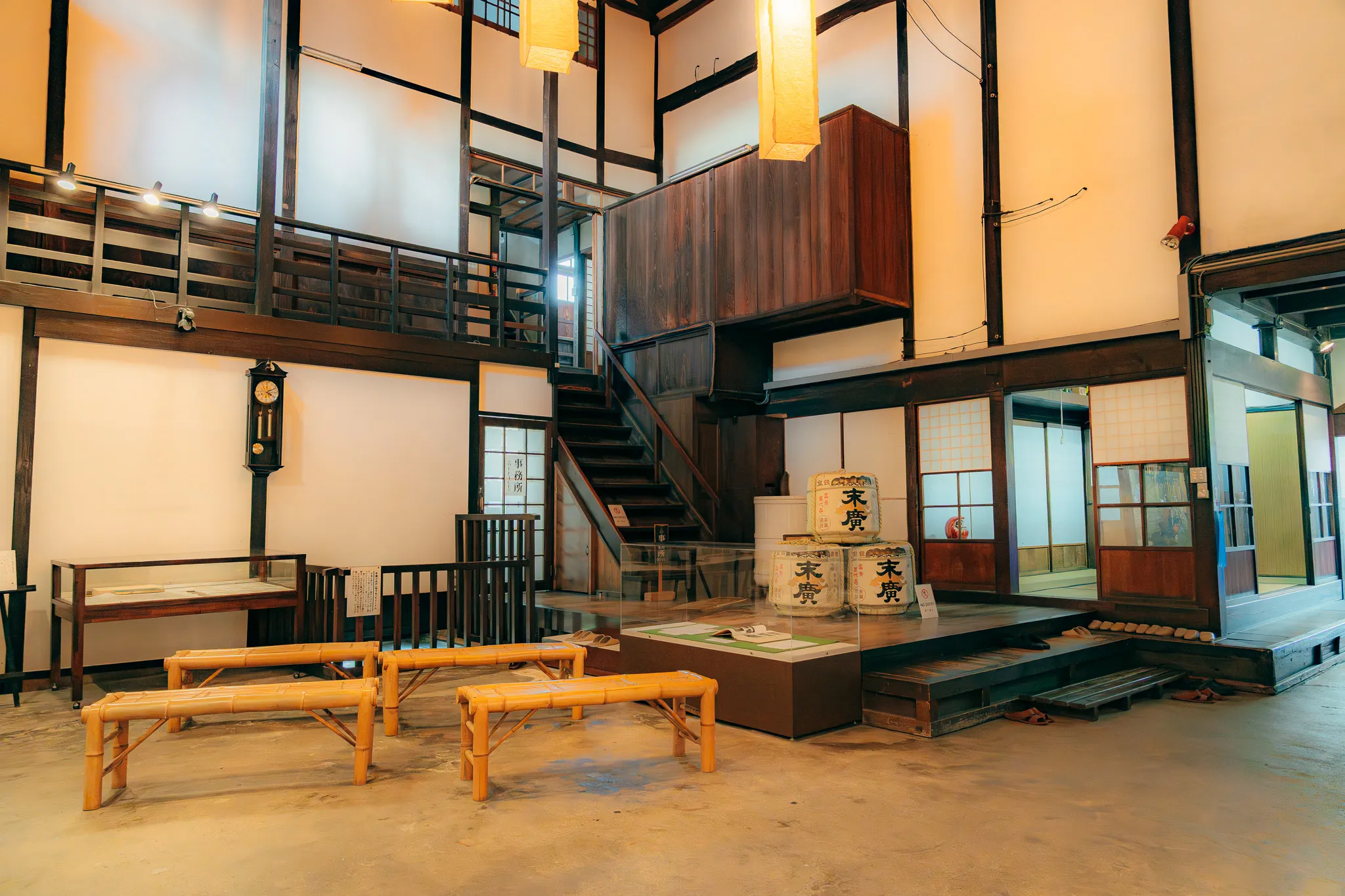
After enjoying our shopping, we returned the rental car and headed toward Tokyo via Koriyama Station. Thus, our two-night, three-day trip to Aizu quietly drew to a close.
Just a few hours from Tokyo, such rich moments unfold— A time enveloped in the warmth of people and land, unlike daily life where efficiency and speed reign supreme.
The kindness of locals, classic attractions where history and culture breathe, and fleeting, breathtaking views crafted by nature.
By the end of this three-day journey, I’m sure you’ll feel just as moved as I do by your encounter with the real Japan.
Aizu is a place where new discoveries and “Magokoro,” genuine hospitality await you, no matter how many times you visit.
▷Learn more about the Mist Phantom Gorge and Tadami Line Photography Spots


